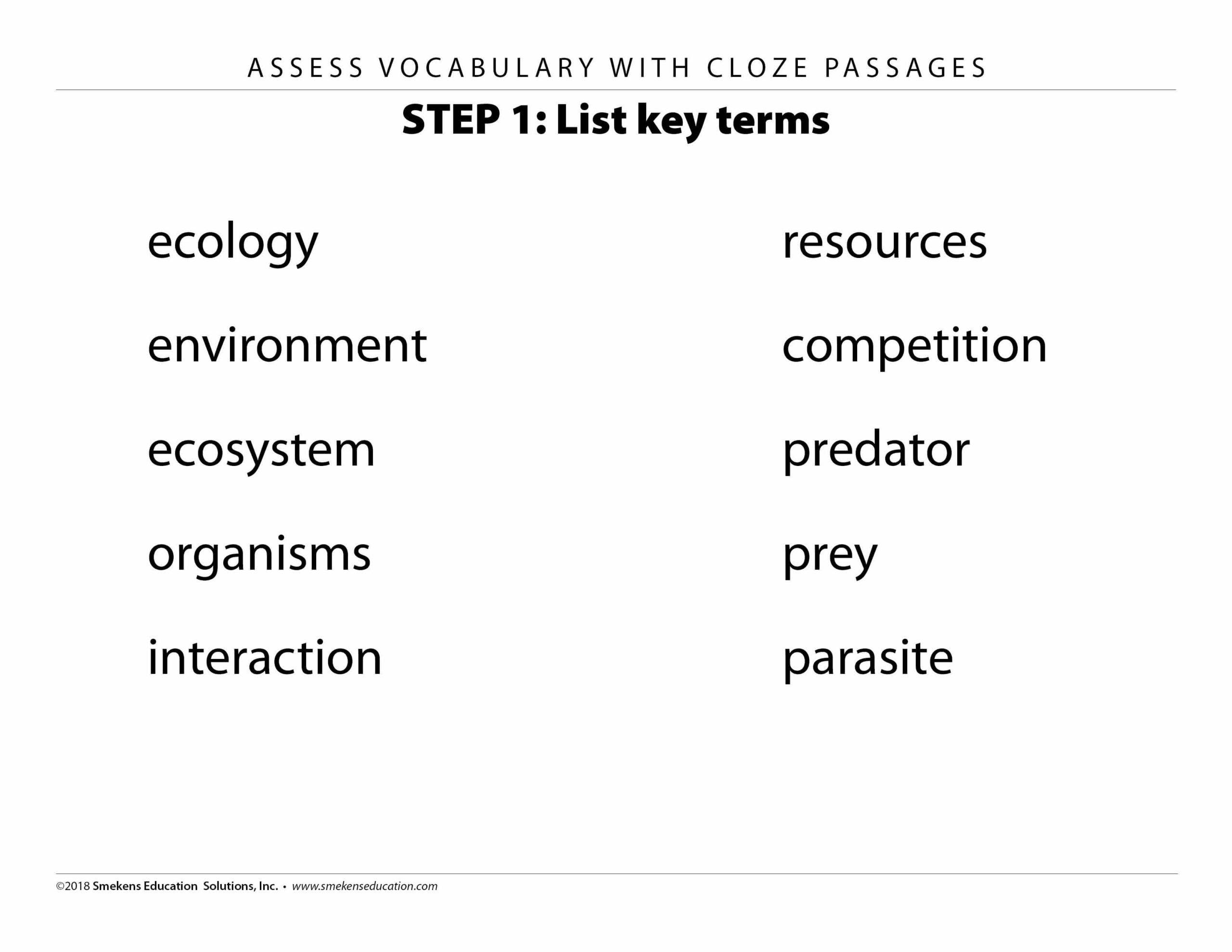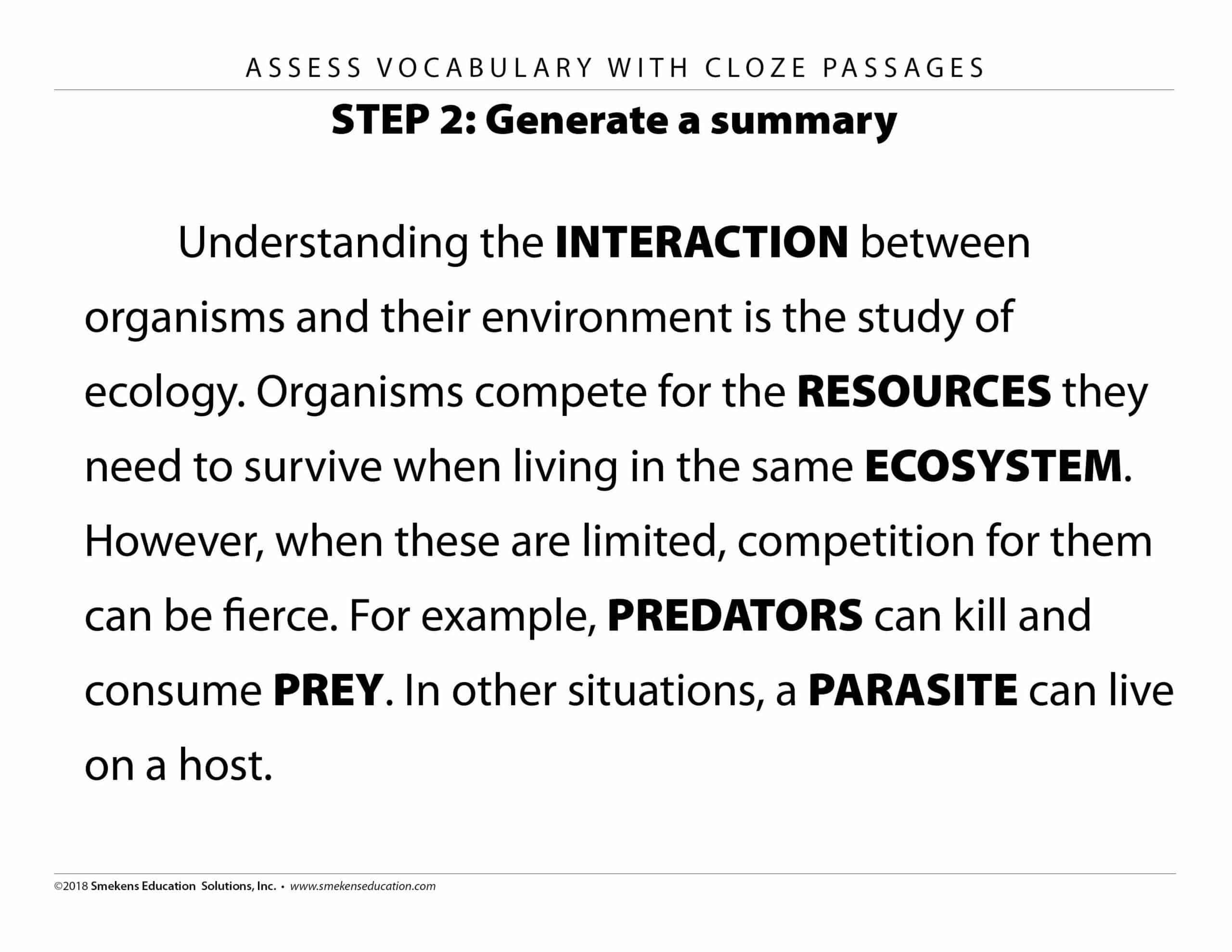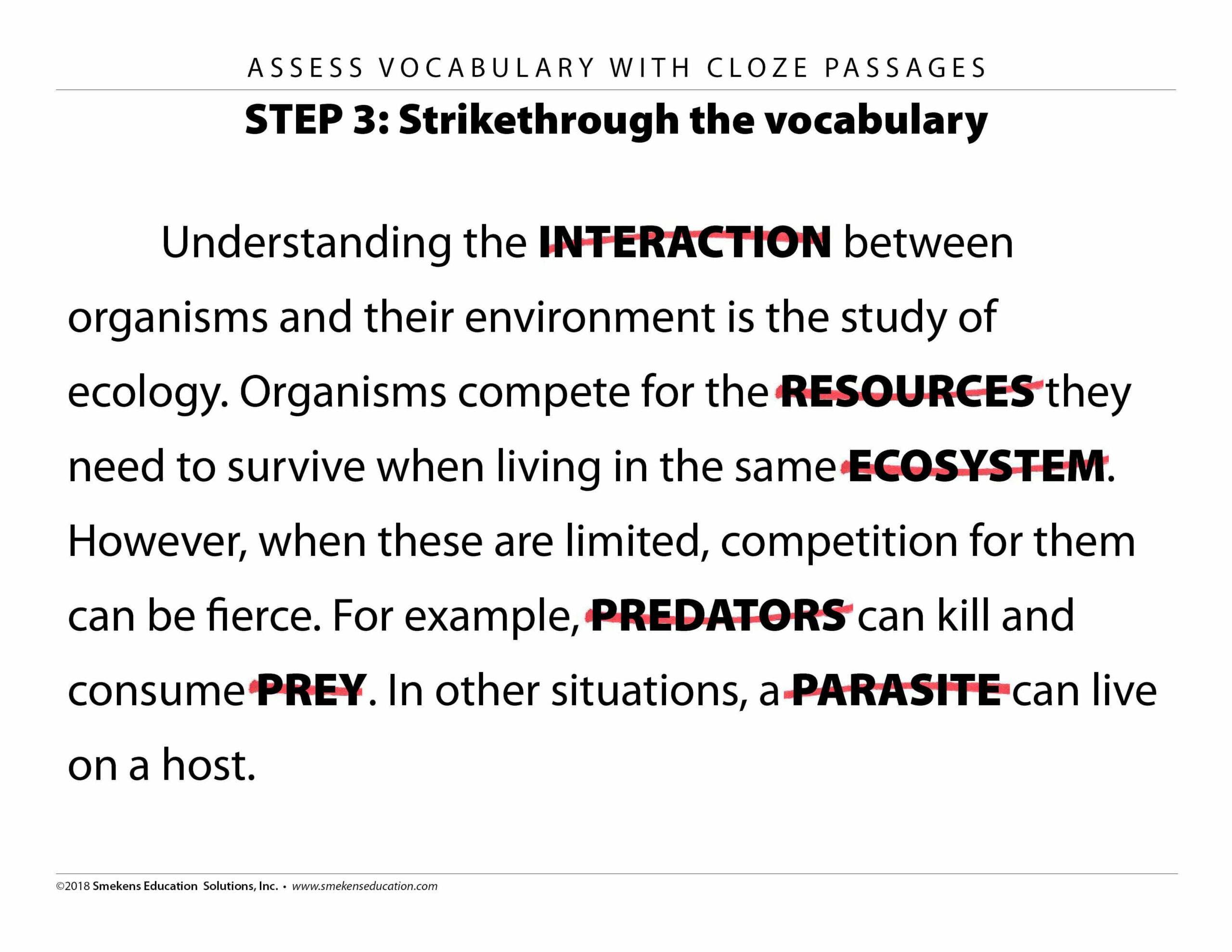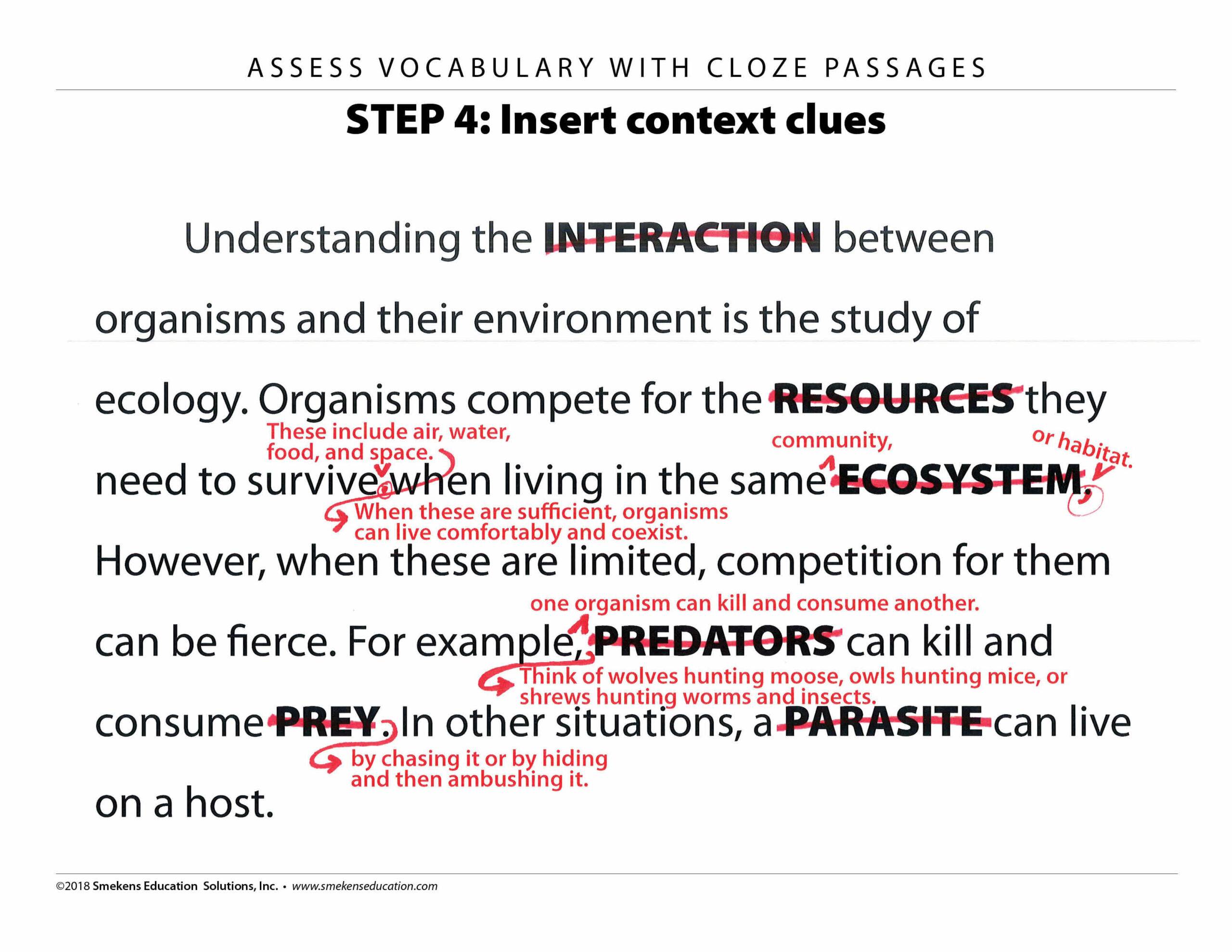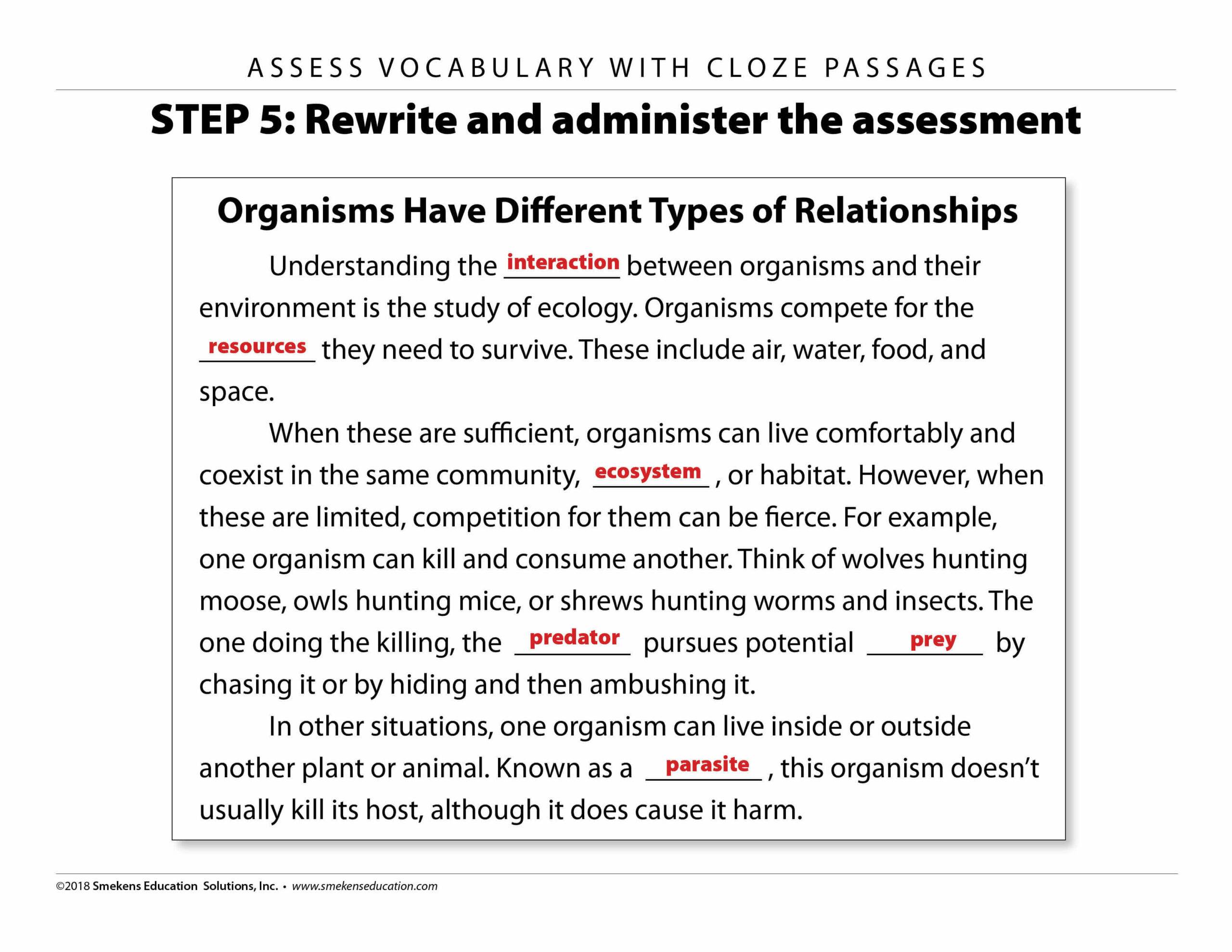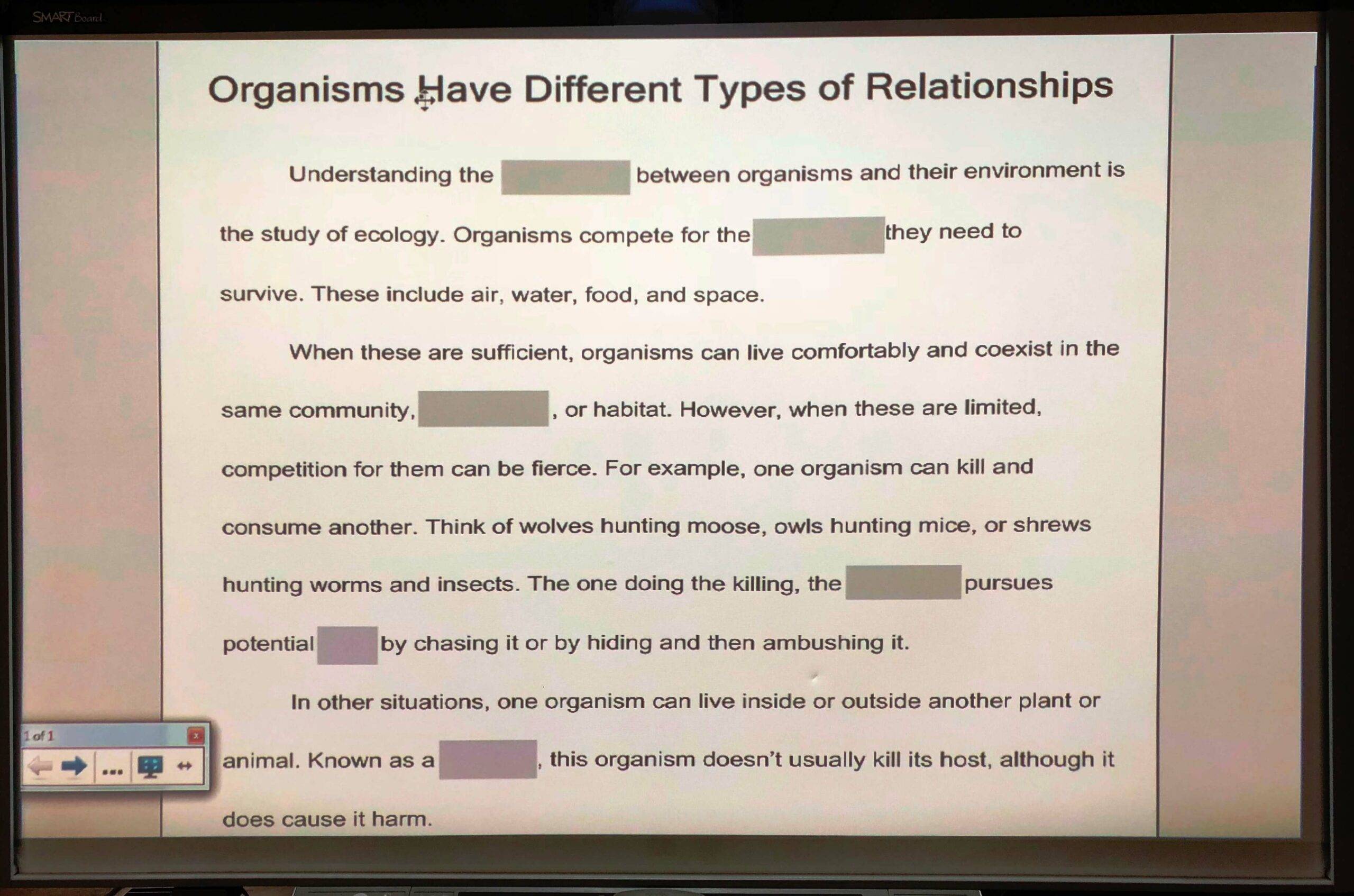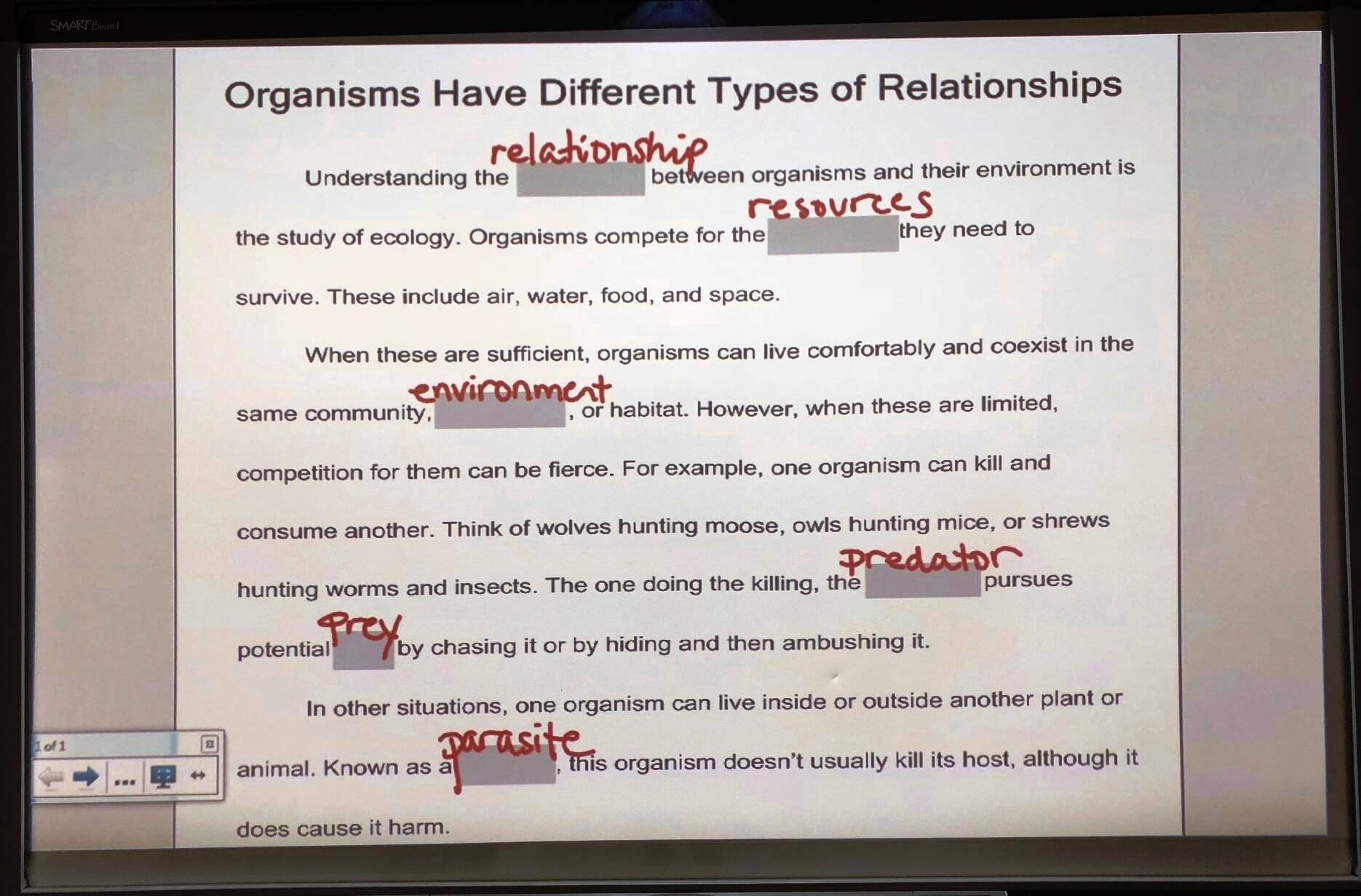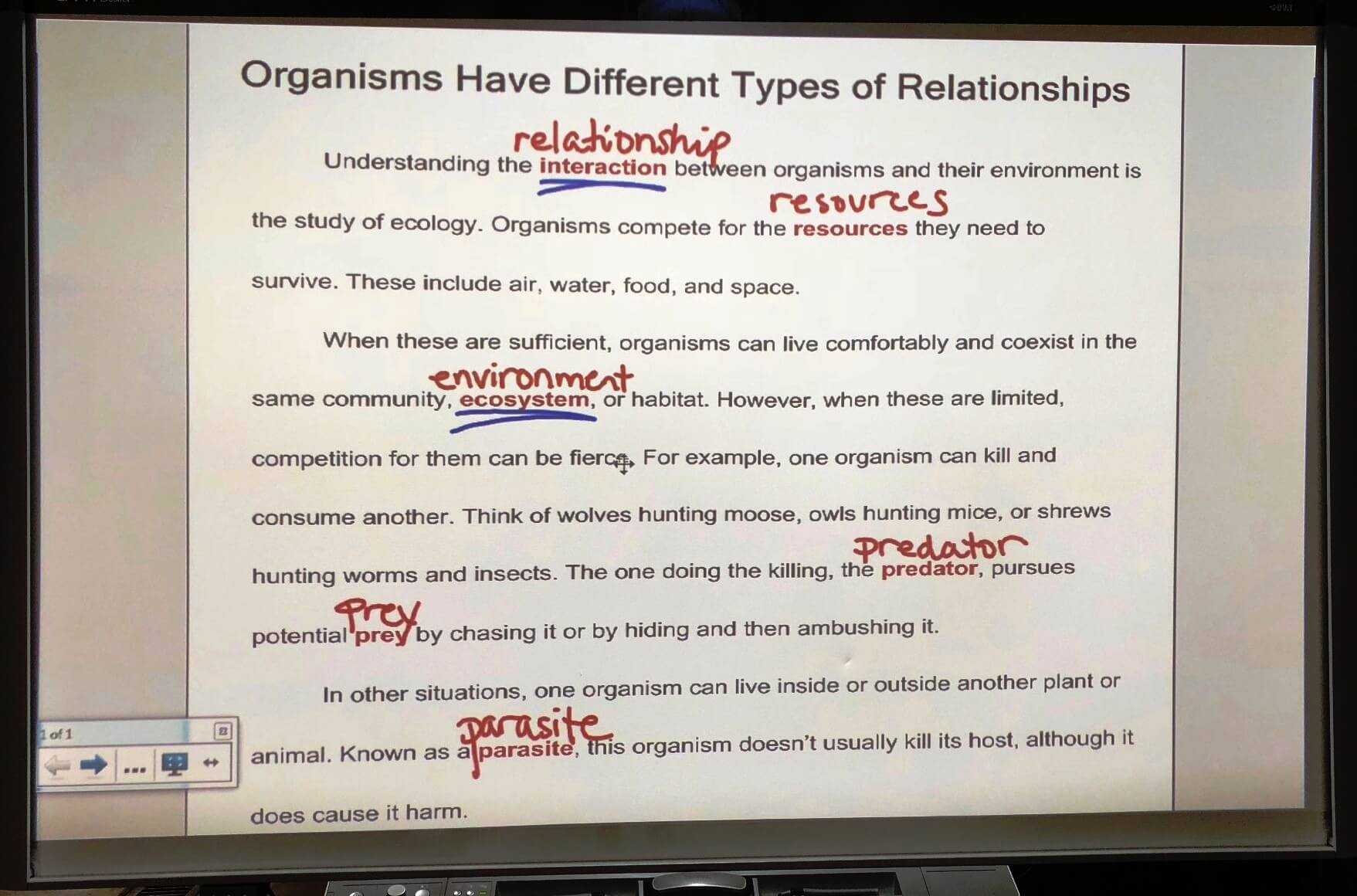Learning Center
reading
Assess vocabulary with cloze passages
april 16, 2018
After teaching a new concept, it’s necessary to assess students’ overall understanding and comprehension. When the instruction includes a heavy dose of new vocabulary, a cloze strategy works well.
At first glance, a cloze passage may appear to be a simple fill-in-the-blank worksheet. However, if teachers follow these five steps, they can develop a tool that measures students’ comprehension of essential vocabulary.
STEP 1: List the key terms students should have mastered within the unit.
STEP 2: Generate a summary of the content covered, utilizing any or all of the domain-specific terms listed in Step 1.
STEP 3: Strikethrough the vocabulary words within the summary to produce the first draft of a cloze passage.
The purpose of this assessment is to measure students’ understanding of a concept based on their ability to use domain-specific vocabulary accurately. However, in its current state, the summary will be too vague. For students to apply the correct vocabulary words within the right blanks, they must monitor the cloze passage for meaning. Consequently, the sentences must provide context clues that indicate which word fits where.
STEP 4: Reread the initial summary and insert details, synonyms, examples, and explanations that would help students infer what word fits the context of the sentence. (There are several types of context clues. These are the same details students use when they are inferring the meaning of any unfamiliar word within their reading.)
STEP 5: The final step is to rewrite the summary incorporating these additional context clues and deleting the vocabulary terms themselves. Plan to add a title to the cloze passage, as it provides students a starting point or main idea to initially focus their thinking. It’s also not a bad idea to share the final cloze passage with a colleague before administering it to students. This provides a quick check that there are enough details to infer the intended terms.
Introduce cloze passages
Before giving the first cloze-passage assessment, introduce this strategy within a few whole-class activities. Explain that the passage itself provides “clues” that will help students infer the omitted words.
Be sure to reveal the types of context clues that will support their inferring. Also, clarify that these clues often come within the sentence but may appear in the sentence before or after the blank, too.
For younger grades, execute this whole-class activity with the sentences written on sentence strips and displayed within a pocket chart. Put the vocabulary words on separate index cards and post them on the board for all to see. Begin to read the cloze passages, and as students discuss which term best fits the context, move the index cards around the pockets allowing students to physically see the words within each sentence.
For those classrooms with interactive whiteboards, the key words might be blocked out or covered up with a box. Then, when working through the passage with students, write in their suggested answers. After finishing the entire passage, slide their answers above the line of text and delete the box revealing the correct vocabulary word.
Practice with partners
Some teachers teach their students how to write their own cloze sentences using selected vocabulary words. By creating such sentences, students quickly learn the kinds of context clues to look for as a reader, too.
Have students work in pairs to write cloze sentences/passages. Then trade and complete each other’s for a simple peer assessment.
Differentiate passages
For younger students, ELLs, or those with special needs, consider adaptions to make the cloze assessment less challenging. The cloze passage above does not include a word bank. However, one way to provide additional support for students would be to include a list of vocabulary words to choose from. There are several ways to format this.
- Provide the same number of words as blanks and note the list at the top of the cloze passage.
- A slightly more difficult version would be to provide more words than blanks.
- Provide a bank of 2-3 words at the end of each sentence with a blank.
- Another option is to provide no word bank but include the first letter of each missing vocabulary word.
Another facet of the passage that can be adjusted is the overall sentence structure. Revise the passage to have simpler words and shorter sentences. This bite-size reading of simple sentences is easier to wade through compared to a handful of long complex sentences. (To measure the Flesch-Kincaid readability of any cloze passage, copy and paste it into this free Grade-Level Calculator.)
- EIGHTH GRADE READABILITY: One organism can kill and consume another. Think of wolves hunting moose, owls hunting mice, or shrews hunting worms and insects. The one doing the killing, the predator, pursues potential prey by chasing it or by hiding and then ambushing it.
- FIRST GRADE READABILITY: One organism can kill and eat another. Wolves hunt moose. Owls hunt mice. Birds hunt worms. The one that kills is called the predator. The one that is chased is called the prey.
Increase the challenge
To make cloze passages more challenging for high-ability students, occasionally use a form of the word that is different than the one they saw most frequently. This reinforces content-specific vocabulary and mastery of the English language.
Many vocabulary words are nouns. However, the sentence structure may require students to use the adjective, verb, or adverb form of the word. If students truly mastered a word, then they know its application in all word forms.
- Organisms compete for the resources they need to survive.
- Survival requires competition between organisms for resources.
- Competing for resources is a common interaction among organisms.
Depending on the sentence structure, the word might require a plural form, rather than singular. This will assess overall grammar skills as well.
- A parasite doesn’t usually kill its host, although it does cause it harm.
- Parasites don’t usually kill their hosts, although they do cause them harm.

